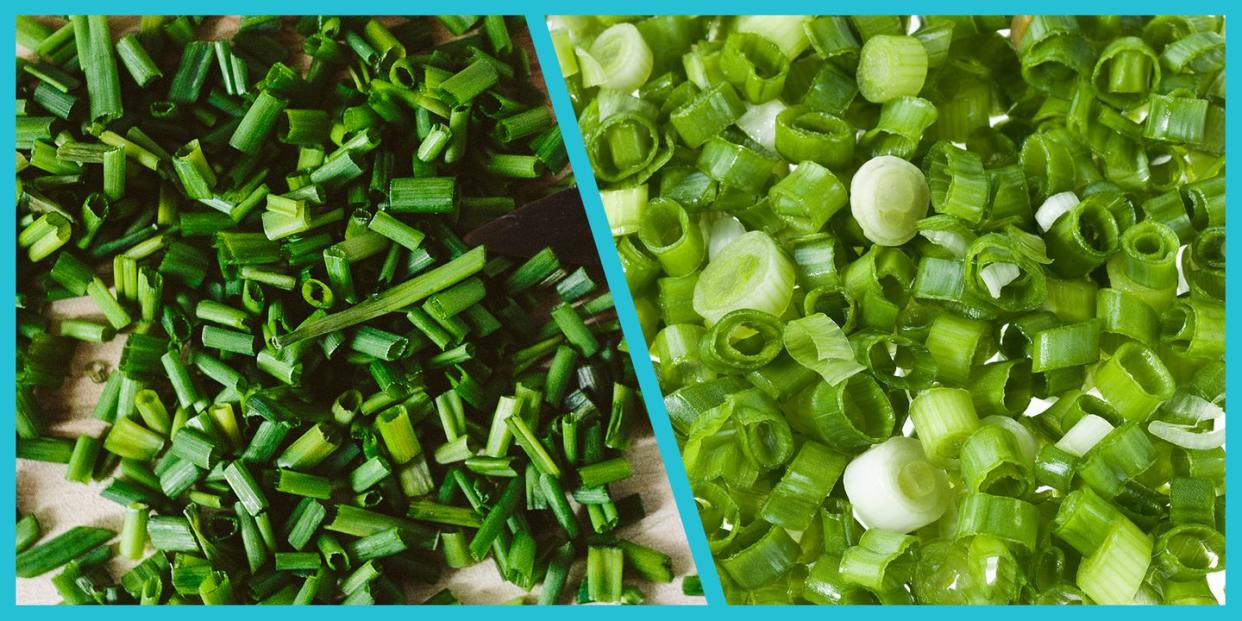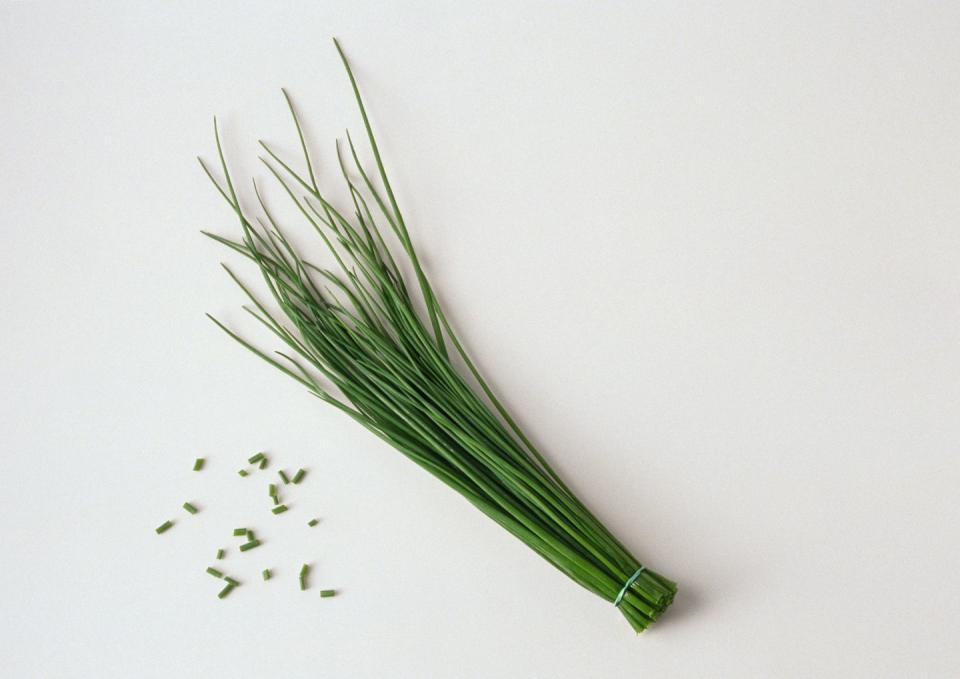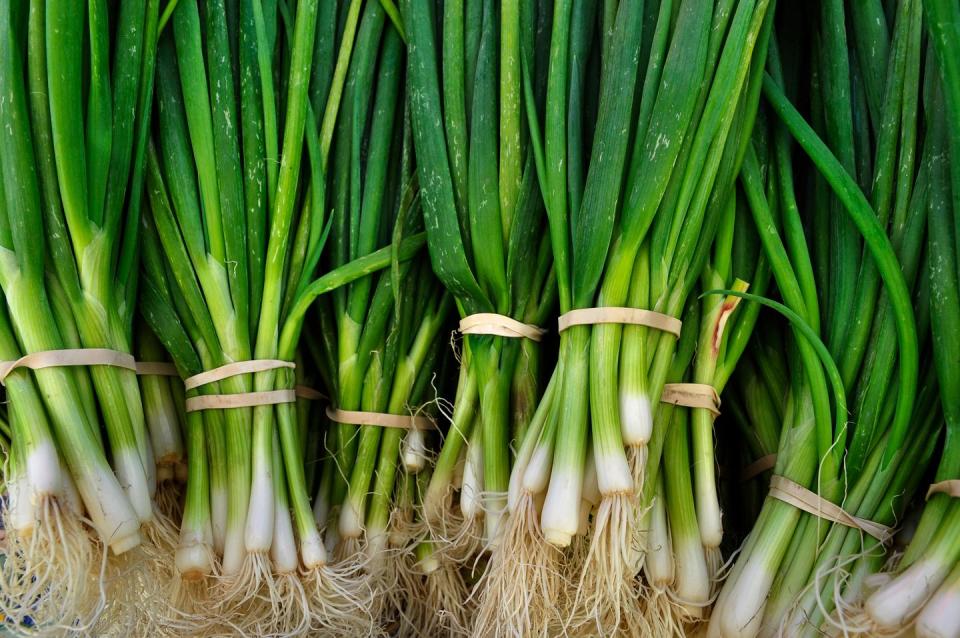What's The Difference Between Chives And Green Onions?

Chives, green onions, scallions—are they all the same? There's a lot of confusion around these little green alliums you often see sprinkled atop stir-frys or cooked into soups. Alike in shape and color, and almost identical when finely diced, chives and green onions can easily be confused with one another.
To learn more about the differences between chives and green onions, I chatted with Chef Jonathan R. Poyourow, associate professor at Johnson & Wales University's College of Food Innovation and Technology.

What Are Chives?
Chives are long, thin herbs with a mild onion flavor. "Chives tend to be more delicate in nature and are really good if eaten raw," said Poyourow. They're often finely diced and mixed into dishes or used as a garnish for a vibrant pop of color or a bit of flavor. Try them in hasselback potatoes, scalloped potatoes, or asparagus and chive tarts.

What Are Green Onions?
Fueling the confusion, green onions can also be referred to as "scallions" or "spring onions." Milder than other onions, they're often cooked in dishes, such as soups, to give an onion flavor that's easier on the palate, according to Poyourow. But they're equally as delicious when sprinkled over chicken fried rice or a beef and broccoli stir-fry, and add a bit of crunch. They have long green stems with white tips at the bottom. This white part is edible, but has a stronger onion flavor than the green portion.
Differences Between Chives And Green Onions
While they're both long and green, when you look closely chives and green onions are quite different. Green onions and are longer, skinnier, and more tender, which makes them cook very quickly. Raw chives have a milder taste, and since they taste good raw and cook quickly, chives are more often used as garnishes—like on a baked potato. Green onions, however, have a thicker diameter and stronger flavor, making them more suitable for cooking in soups and broths, such as miso soup.
Similarities Between Chives And Green Onions
Both chives and green onions are part of the allium genus, which includes garlic and shallots. They can both be used as garnishes, but chives aren't often cooked like green onions. The ingredients have almost identical nutritional values, according to Poyourow, but chives have a bit more calcium and Vitamin A.
Can Chives And Green Onions Be Substituted For One Another?
While Poyourow probably wouldn't use them interchangeably in a fine dining restaurant, he said that would be okay for the home cook. You'll just want to keep in mind their different flavor and cooking profiles.
How To Store Chives And Green Onions
To keep green onions fresh, you have a few options. First, you can dice them and store them in an airtight container in the refrigerator. If you don't want to dice them quite yet, you'll first want to wash and thoroughly dry them. Then cut off the bottom root, cut the green onions in half, wrap them in a paper towel, and place them in an airtight container or plastic bag in the refrigerator. Feel free to cut them in half so they fit. Green onions can also be placed in a glass filled with water to cover the root and left on the counter.
Chives should also be washed and dried before storing. You can either dice them up or wrap them in a paper towel to then be placed in an airtight container or plastic bag and stored in the refrigerator.
Both green green onions and chives can also be stored in the freezer to last even longer.
How To Regrow Green Onions
While you can't regrow chives, green onions can easily be regrown right in your kitchen. Simply plop the root (the bottom white portion) in a glass and fill it just enough to cover the root while leaving the top portion uncovered. Then, place the glass near a sunny window. Similar to herbs, just cut off what you need, and they'll continue to grow. Just remember to change the water regularly.
You Might Also Like

